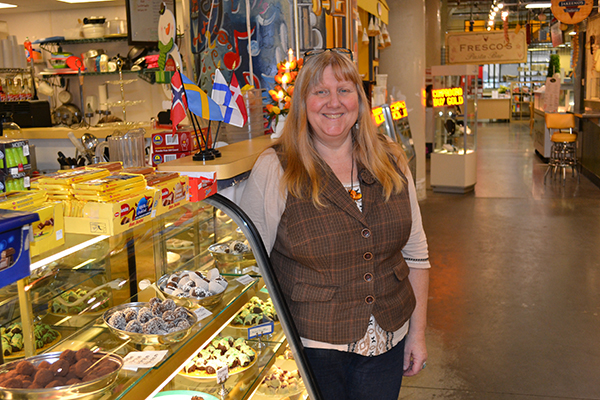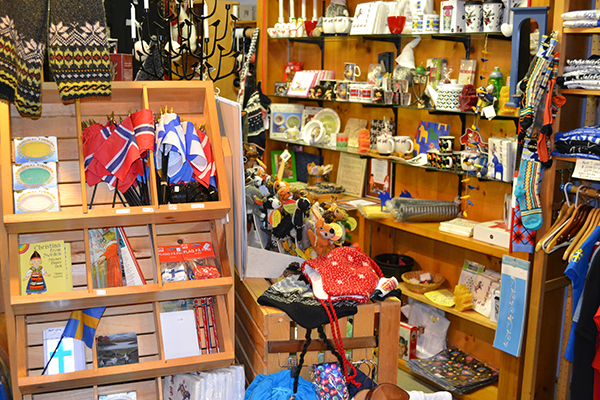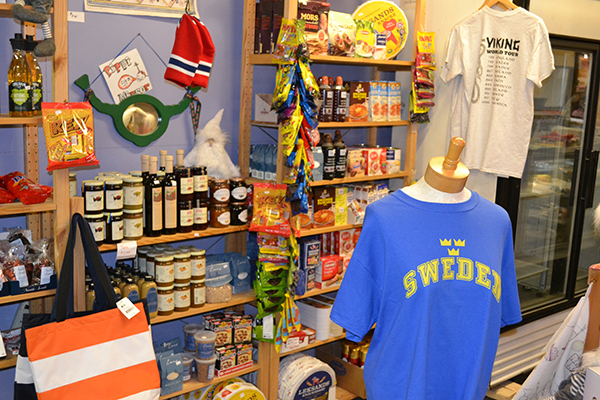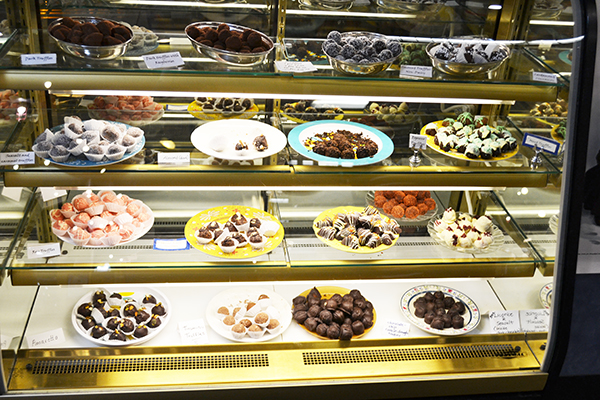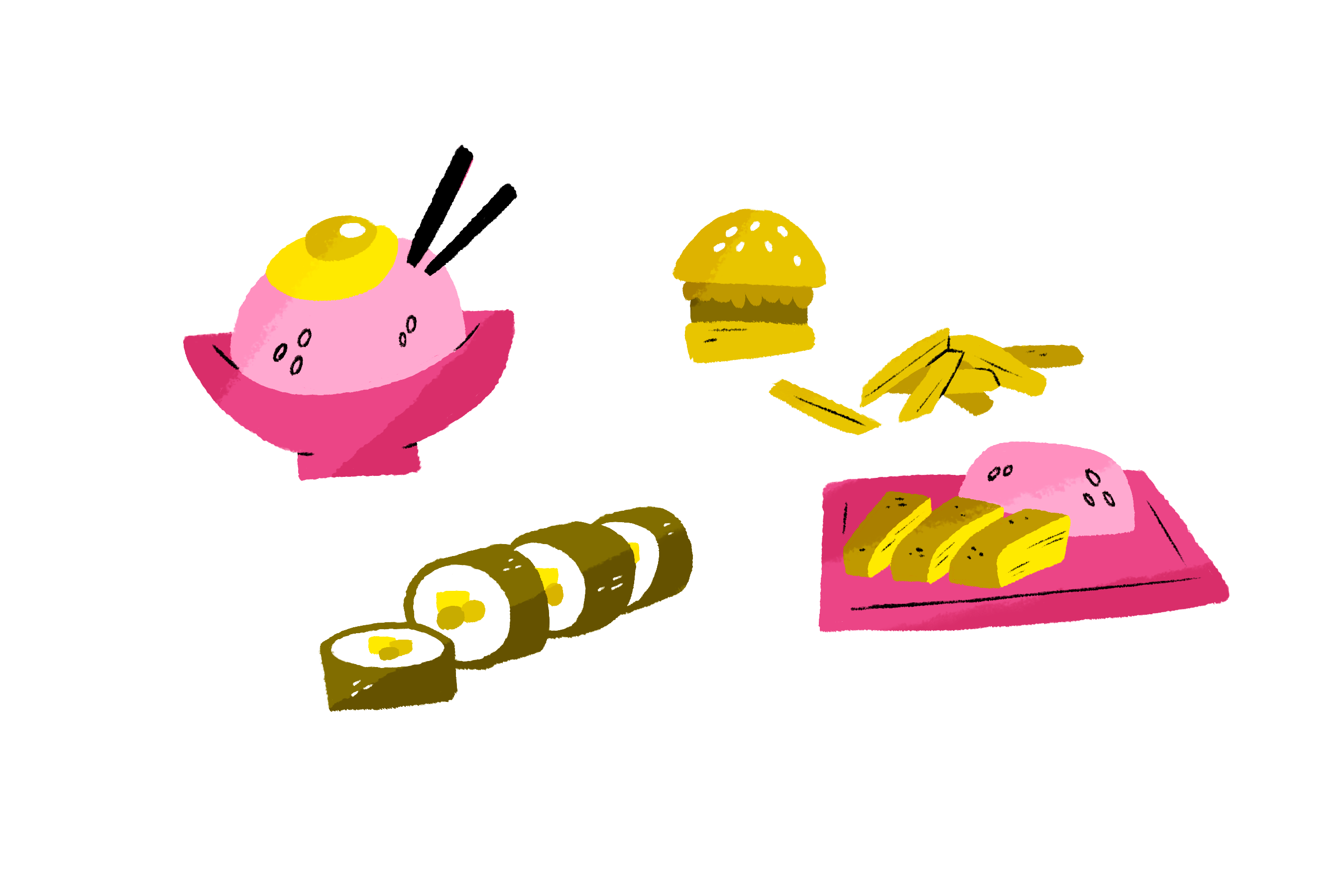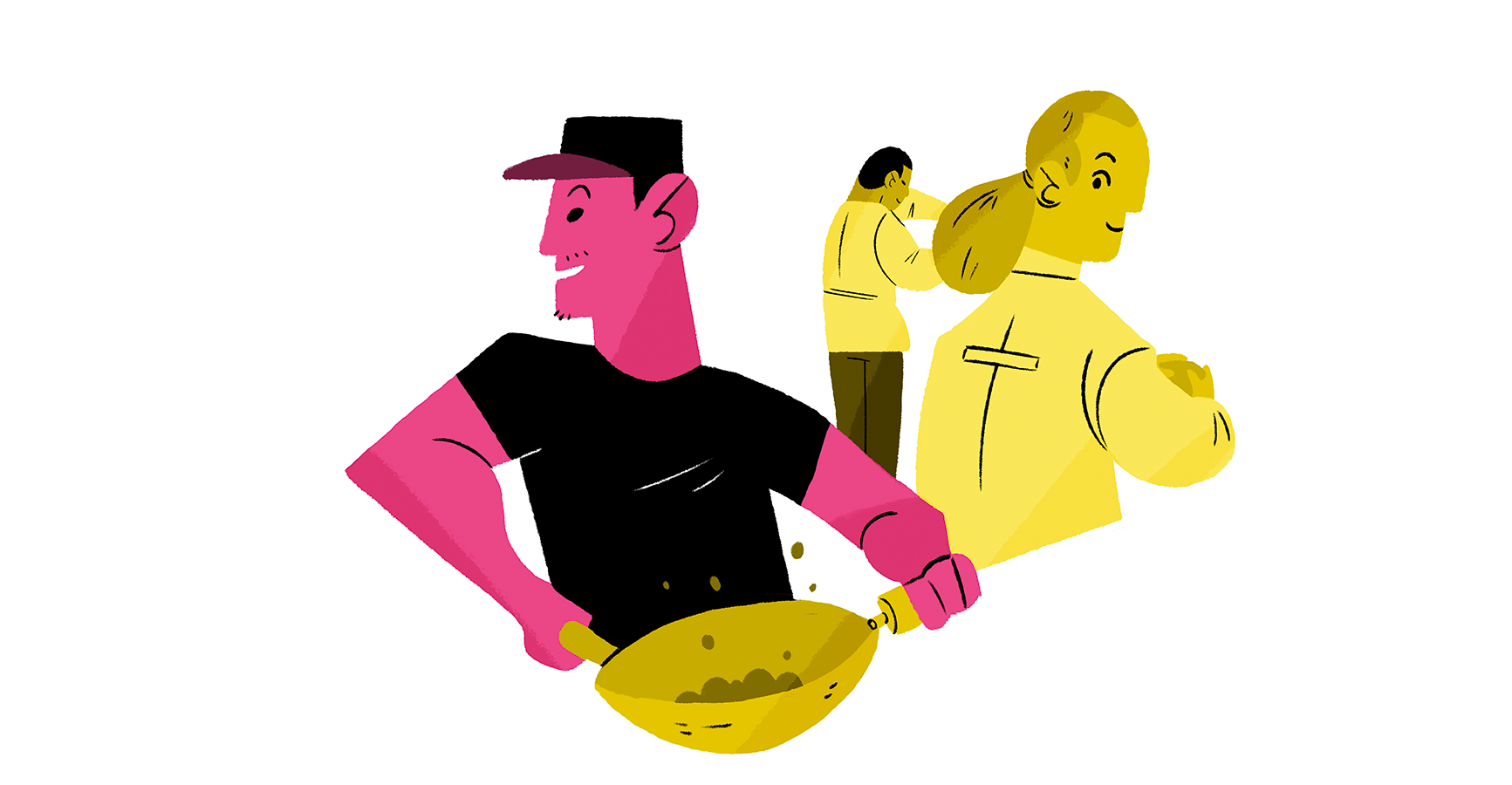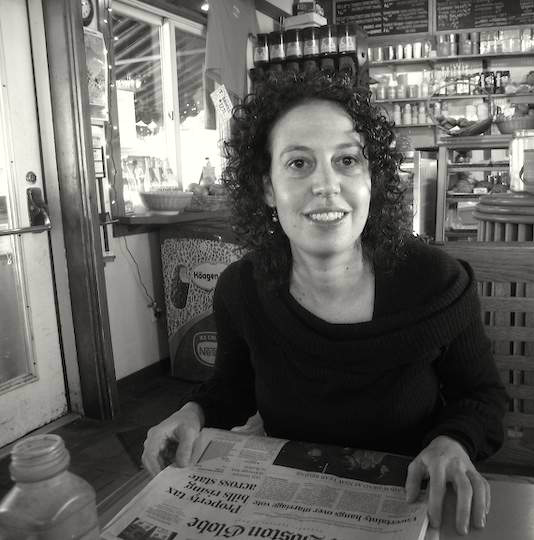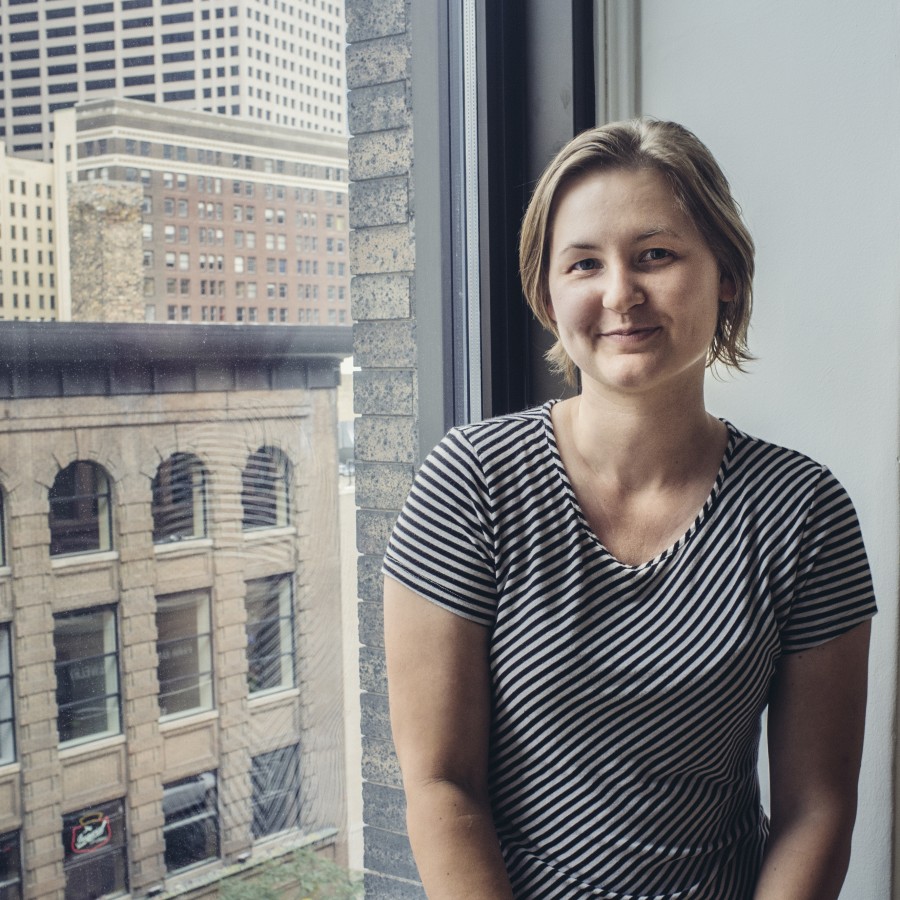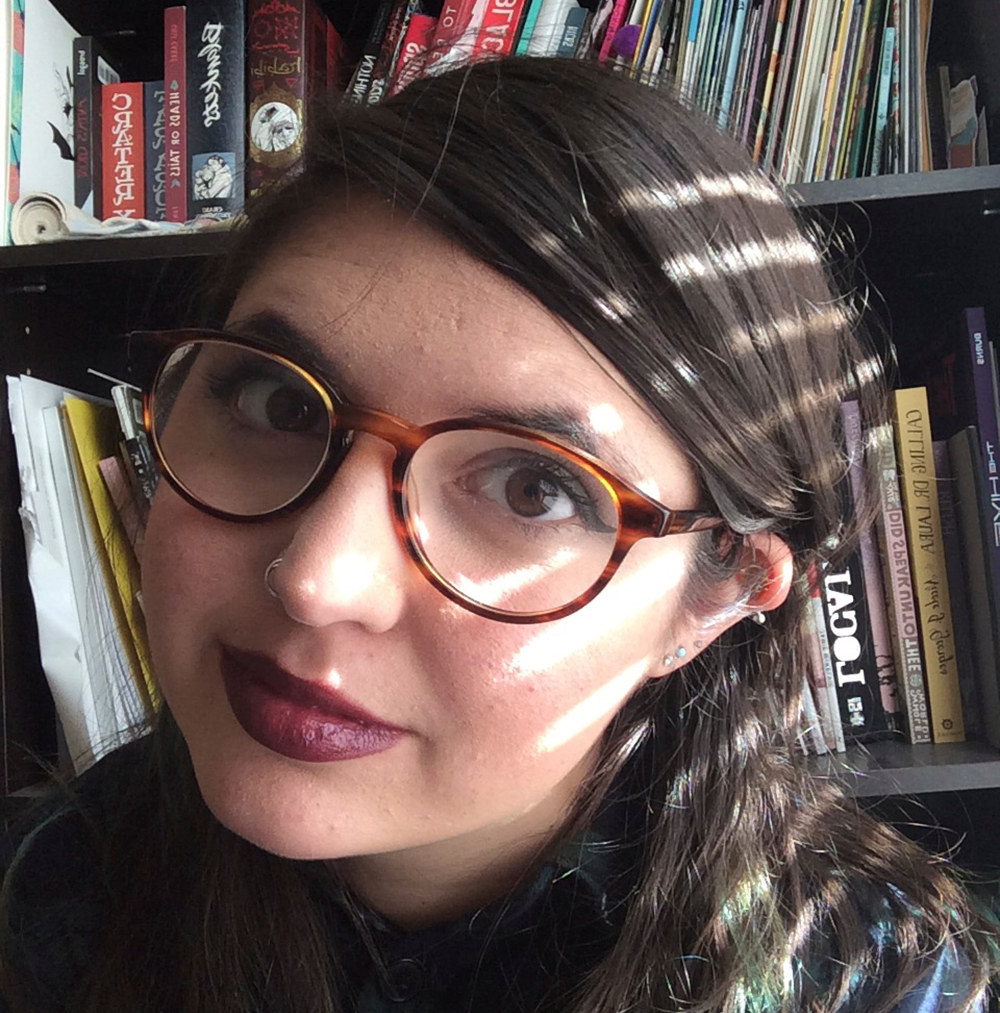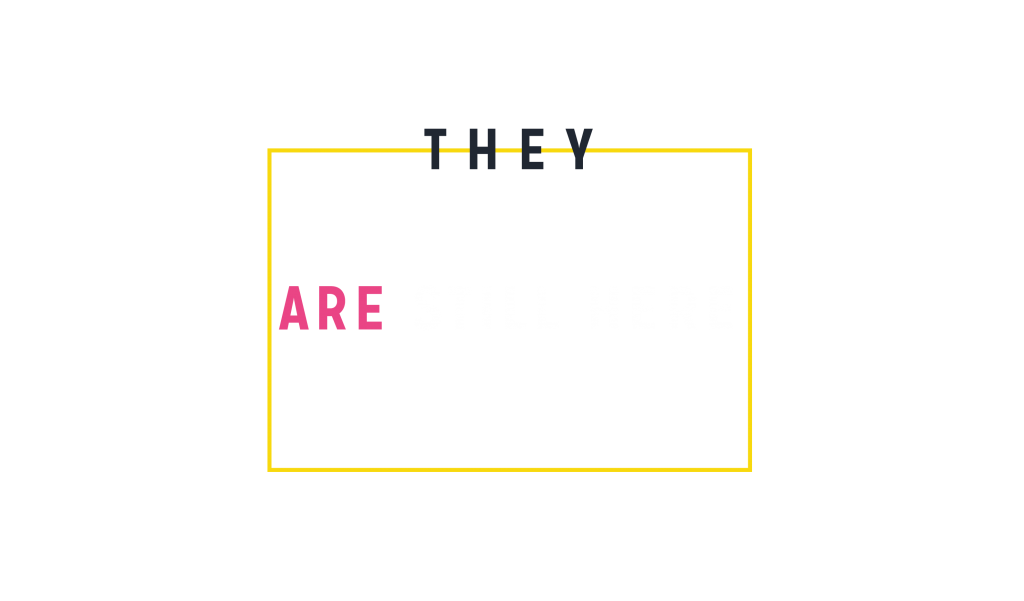

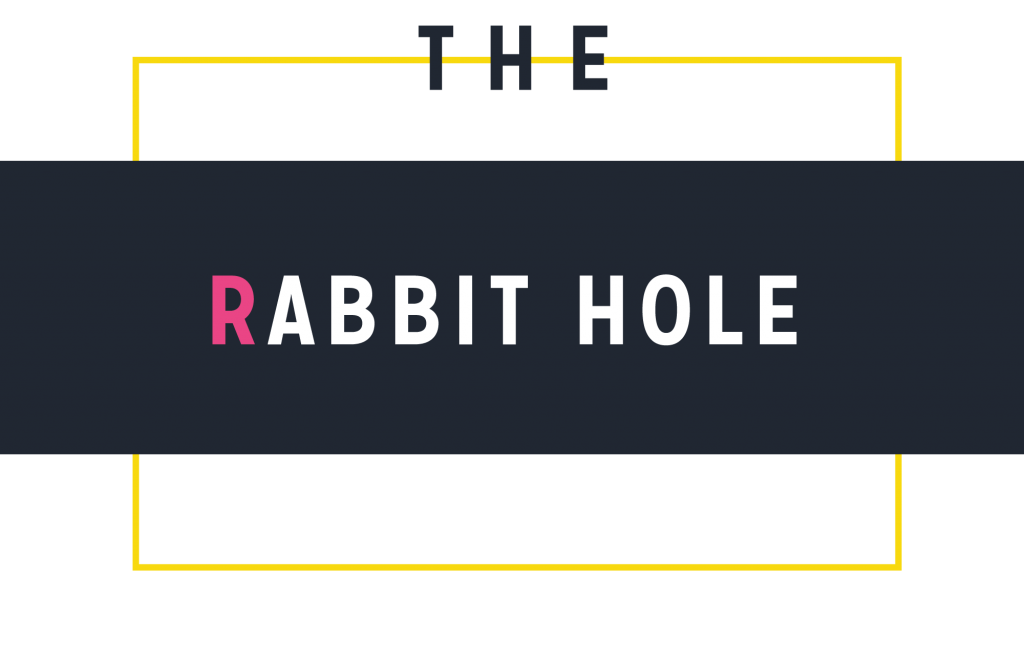

Thomas Kim and Kat Melgaard landed in the Twin Cities from California, with a dream of opening a restaurant that would challenge the Midwestern palate. Thomas creates plates that tell a story about place: the food is Korean, Californian, and Midwestern all at once. They wondered if Minnesotans would embrace a menu rooted firmly in an eclectic melting pot? If not, Tom and Kat were prepared to move on.
STORY BY NANCY ROSENBAUM + PHOTOGRAPHY BY MARIE KETRING + FEATURE ILLUSTRATIONS BY JOHN WILLINSKI + SUPPORTING ILLUSTRATIONS BY LEIGH LUNA
Growing up in Los Angeles in the 1980s, it was not uncommon for Thomas Kim’s friends to tease him about the contents of his refrigerator.

 A child of Korean immigrants, Kim’s parents kept homemade varieties of kimchi, or fermented cabbage, which he says smelled “funky” to unfamiliar noses. A fermented bean paste called “doenjang” that grows mold spurred the worst taunts about so-called “dead bodies” lurking in the icebox. The food that was so normal for Kim and his parents made him stick out as being different from his friends. Back then, he didn’t know how to bridge those two worlds.
A child of Korean immigrants, Kim’s parents kept homemade varieties of kimchi, or fermented cabbage, which he says smelled “funky” to unfamiliar noses. A fermented bean paste called “doenjang” that grows mold spurred the worst taunts about so-called “dead bodies” lurking in the icebox. The food that was so normal for Kim and his parents made him stick out as being different from his friends. Back then, he didn’t know how to bridge those two worlds.
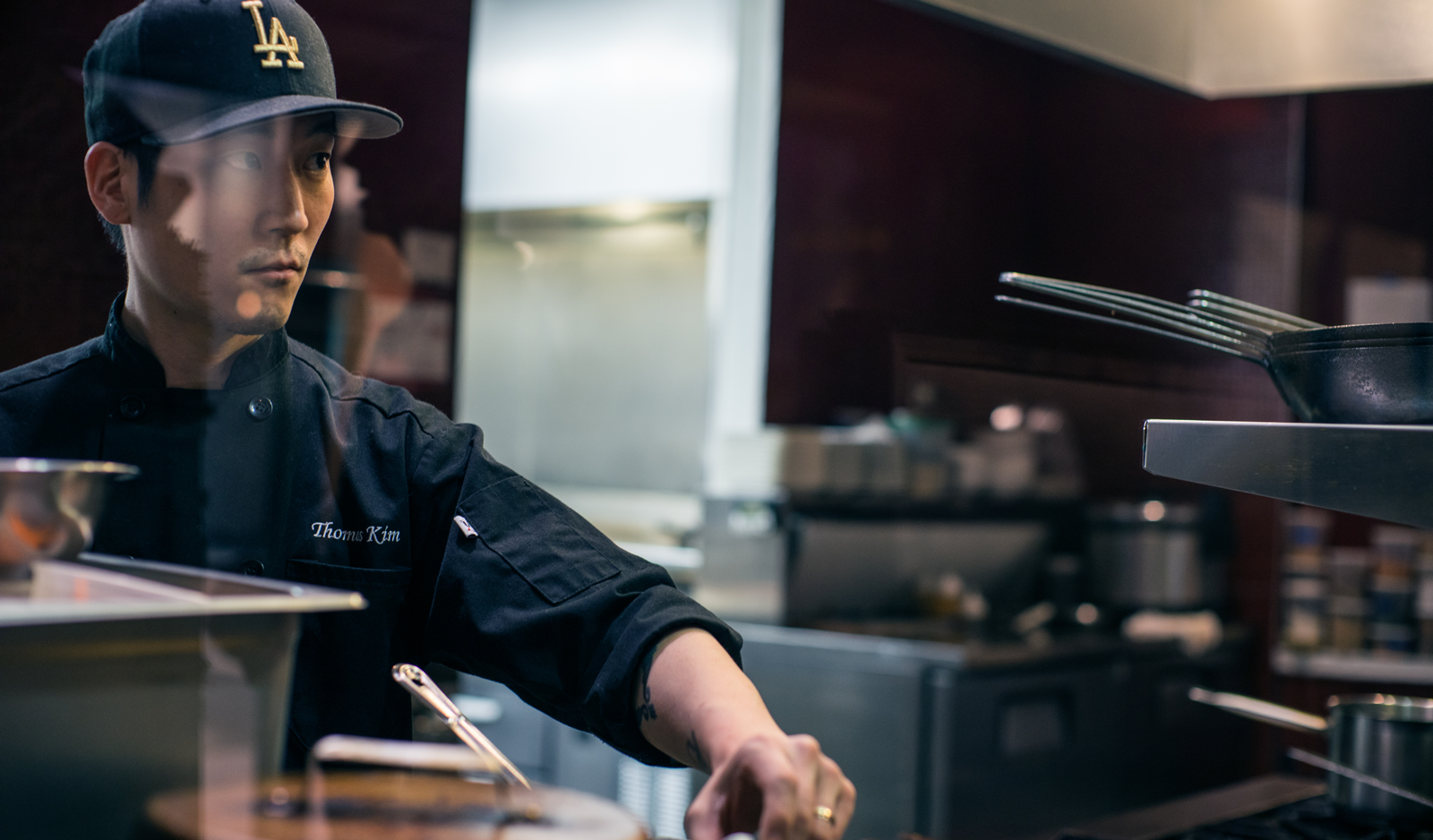
Today, Kim and his wife and business partner Kat Melgaard own the Rabbit Hole, a thriving restaurant tucked inside the Midtown Global Market that serves up dishes inspired by the very ingredients that Kim’s childhood peers derided. 
While there was no guarantee their dreams would bear fruit on unfamiliar turf, the only way to find out would be to jump in feet first.

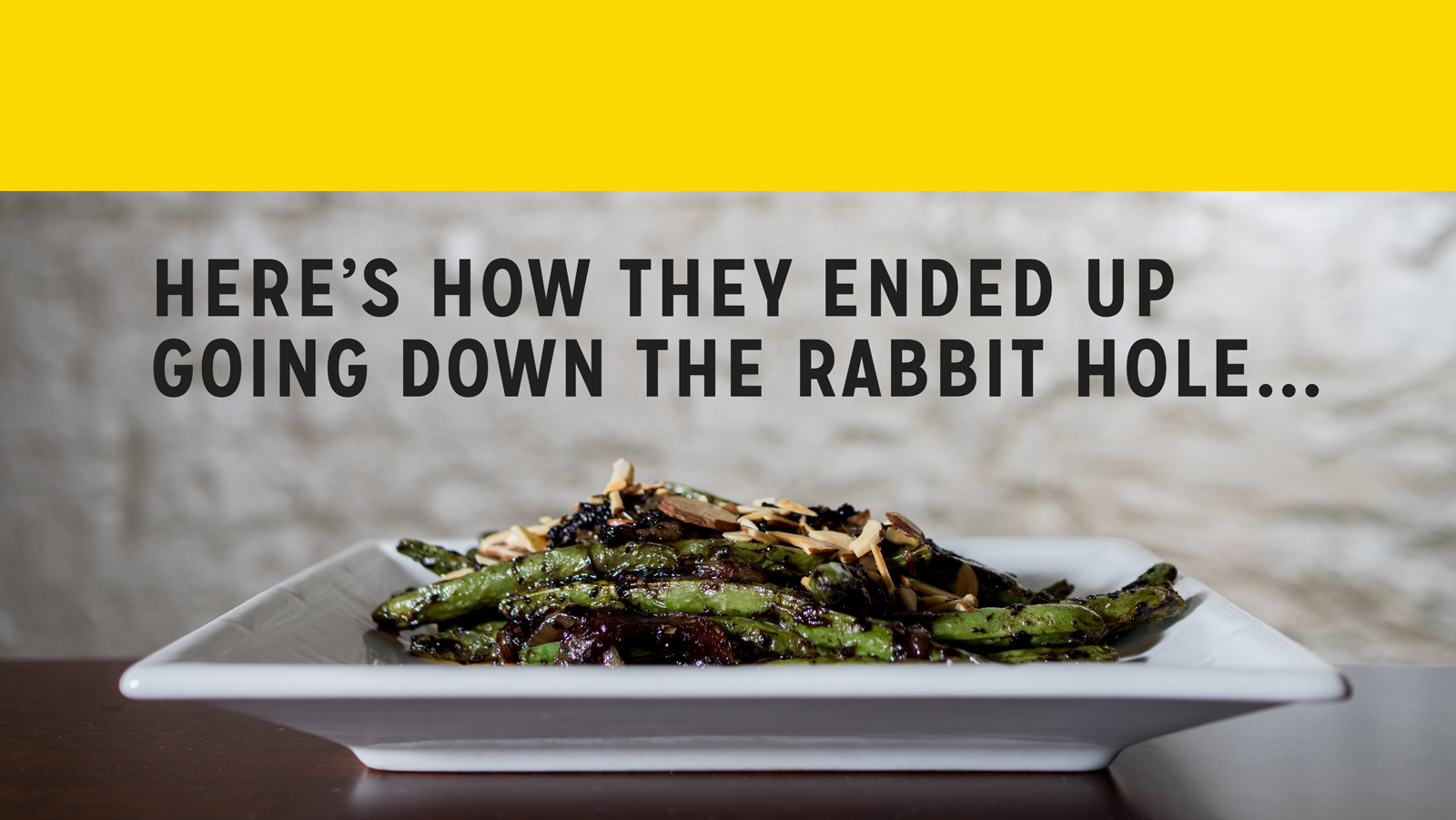

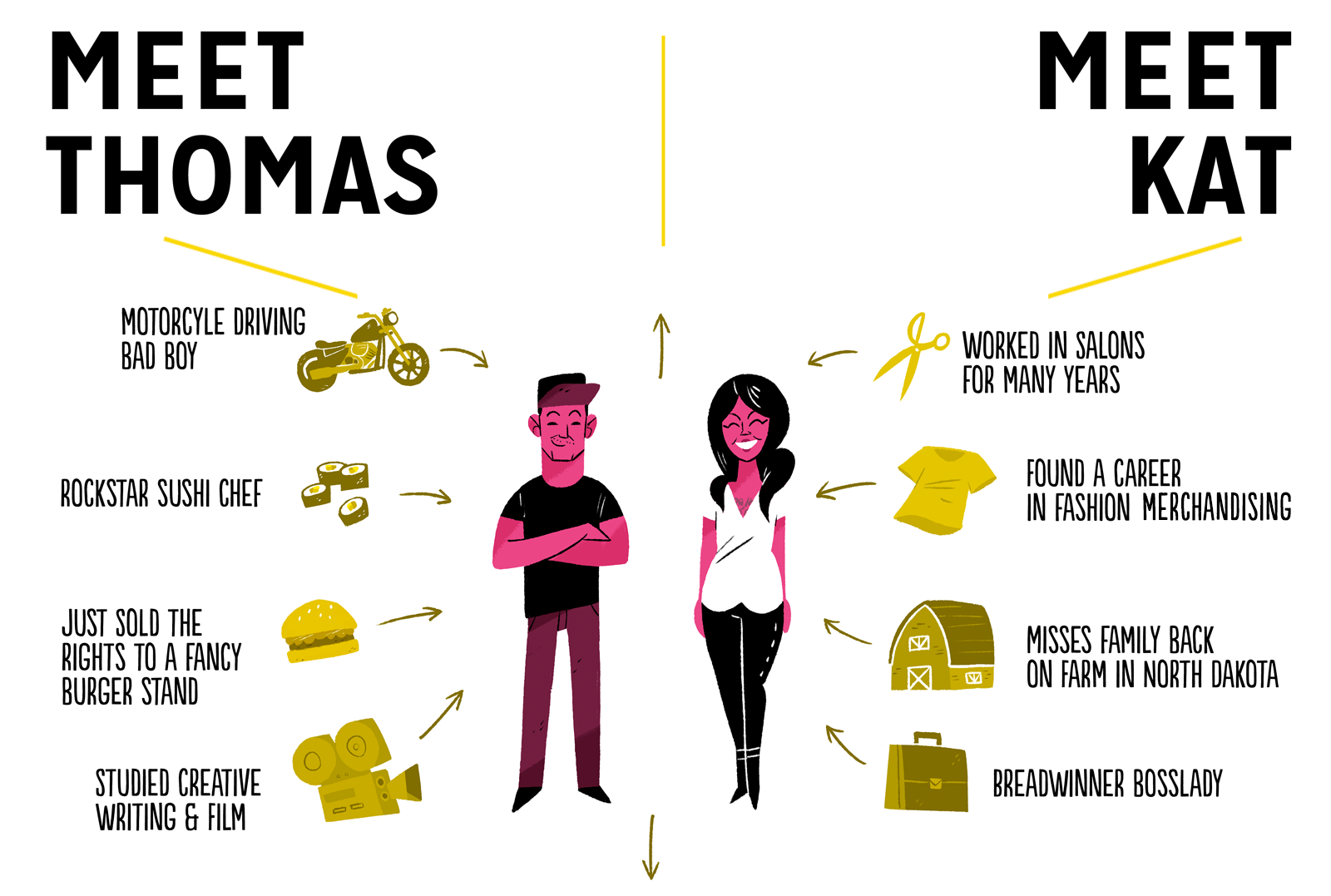
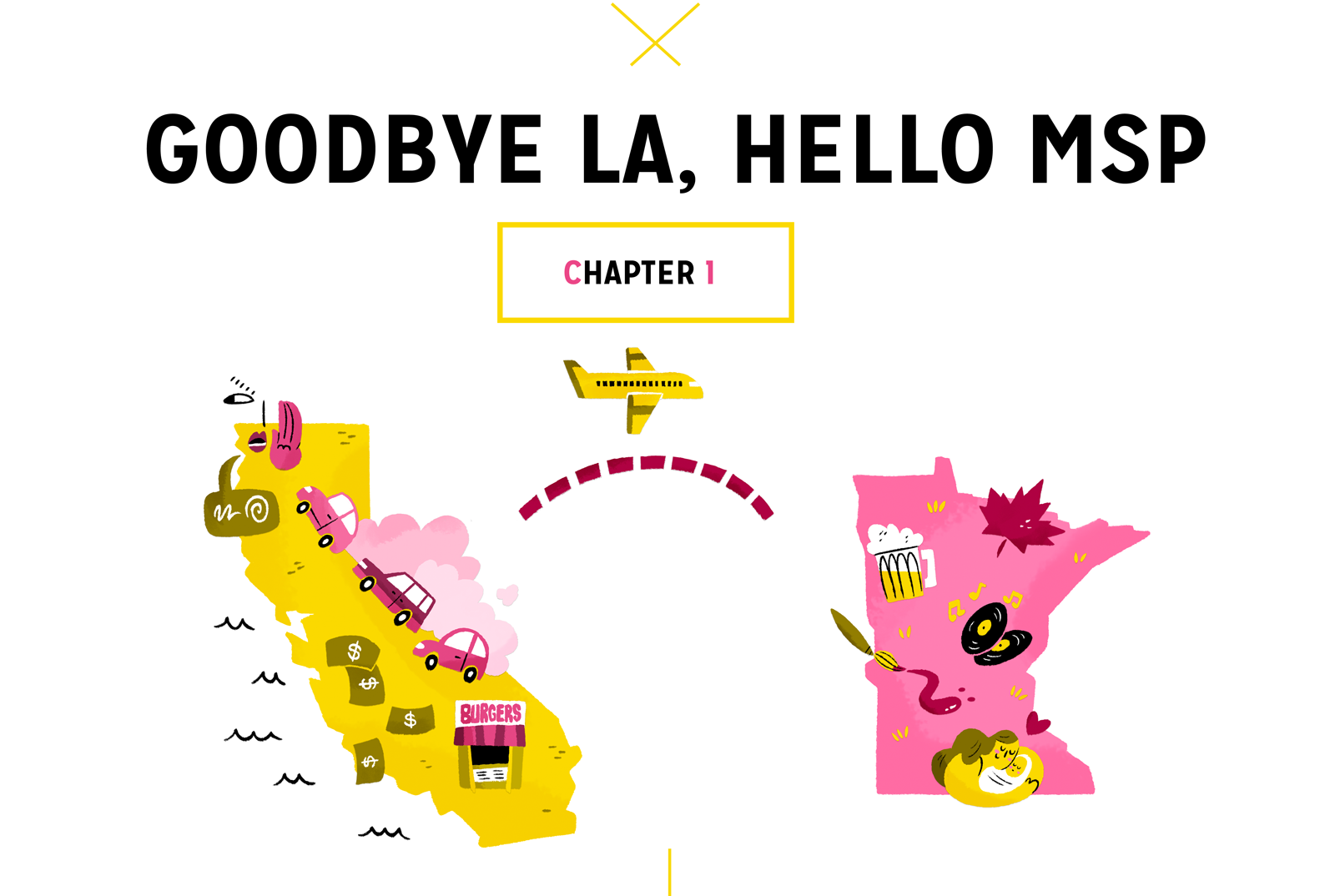
When Thomas and Kat came to Minneapolis, they came with dreams of being their own bosses. But they both assumed they’d get jobs and feel things out for an extended spell before opening a restaurant.
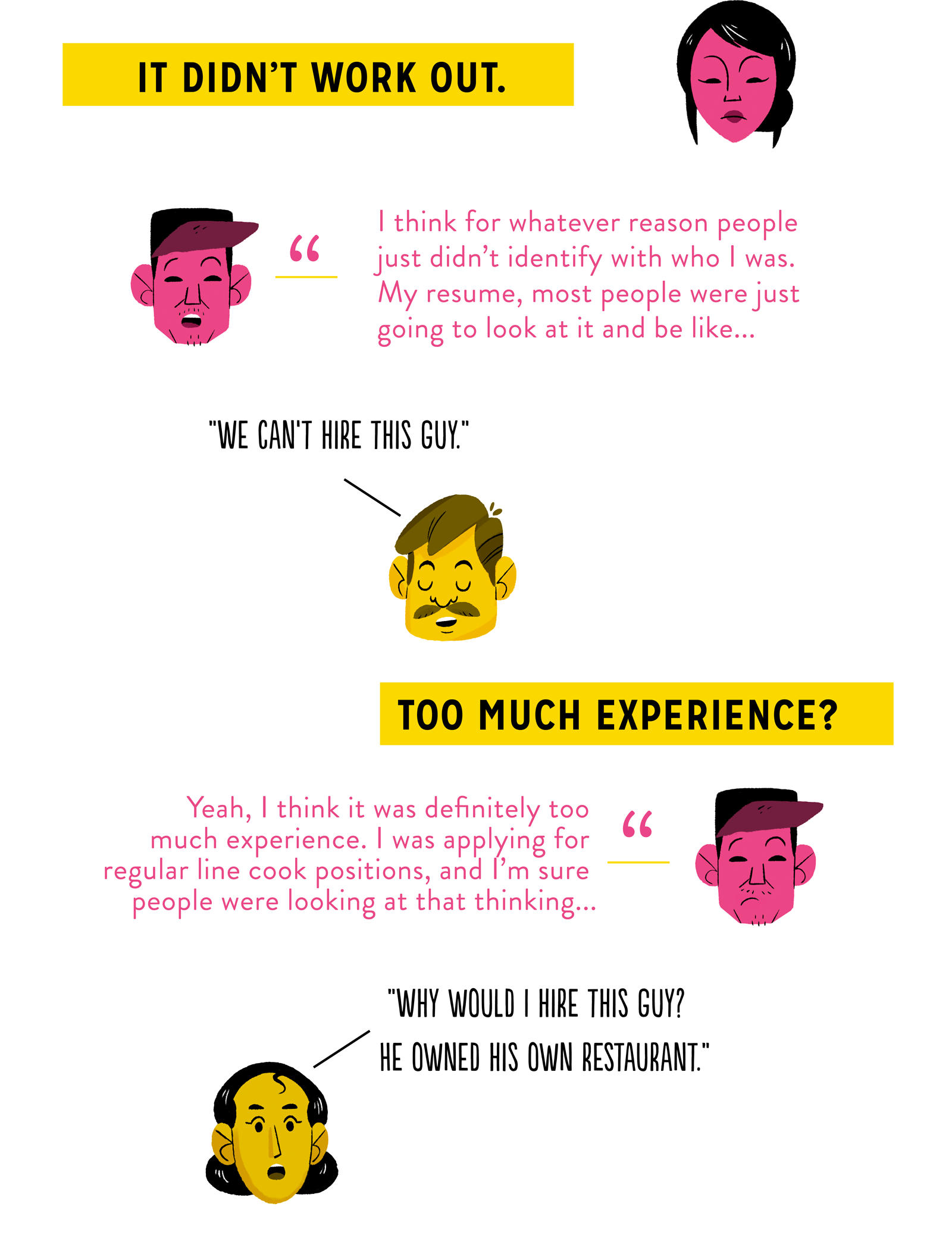
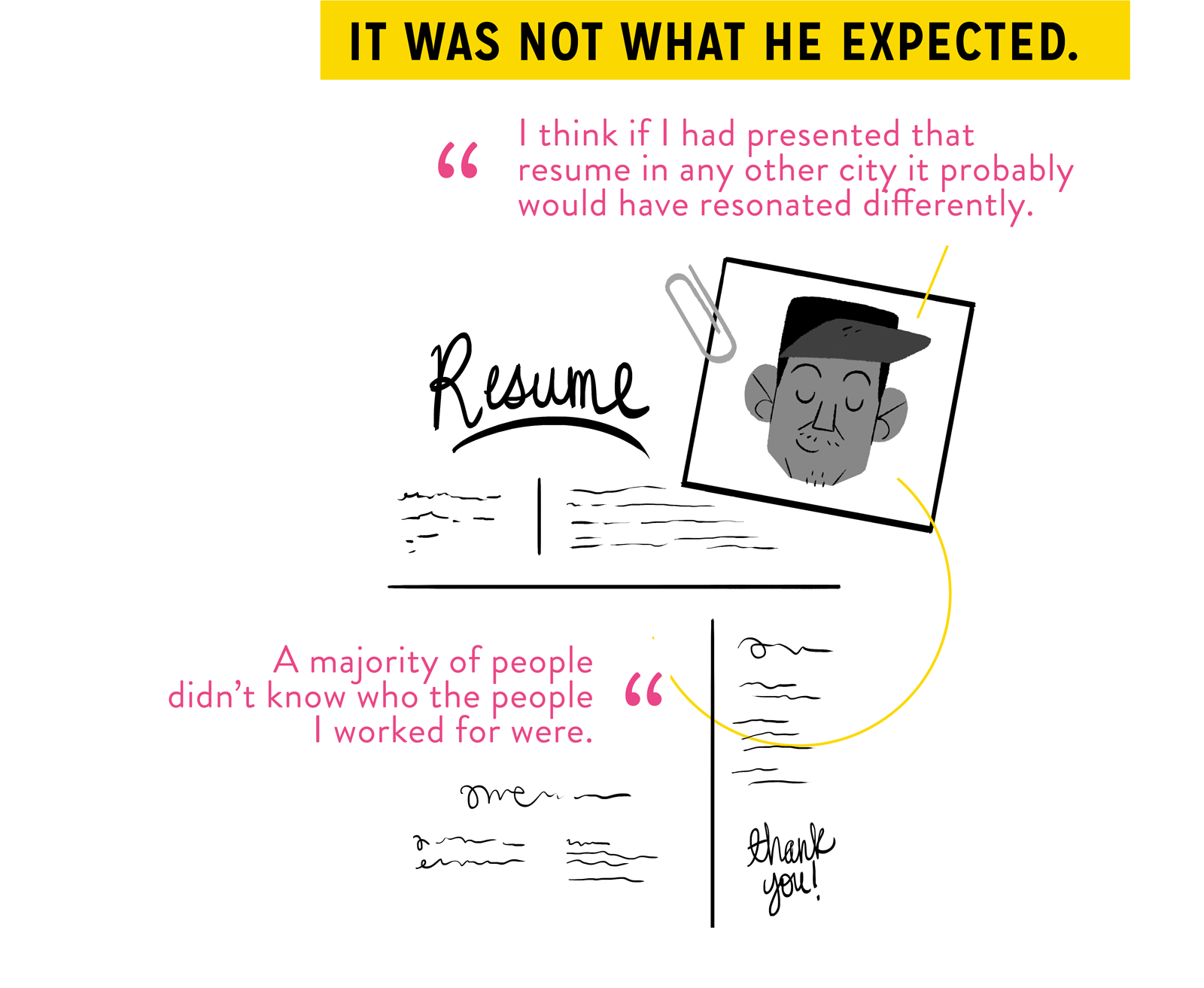
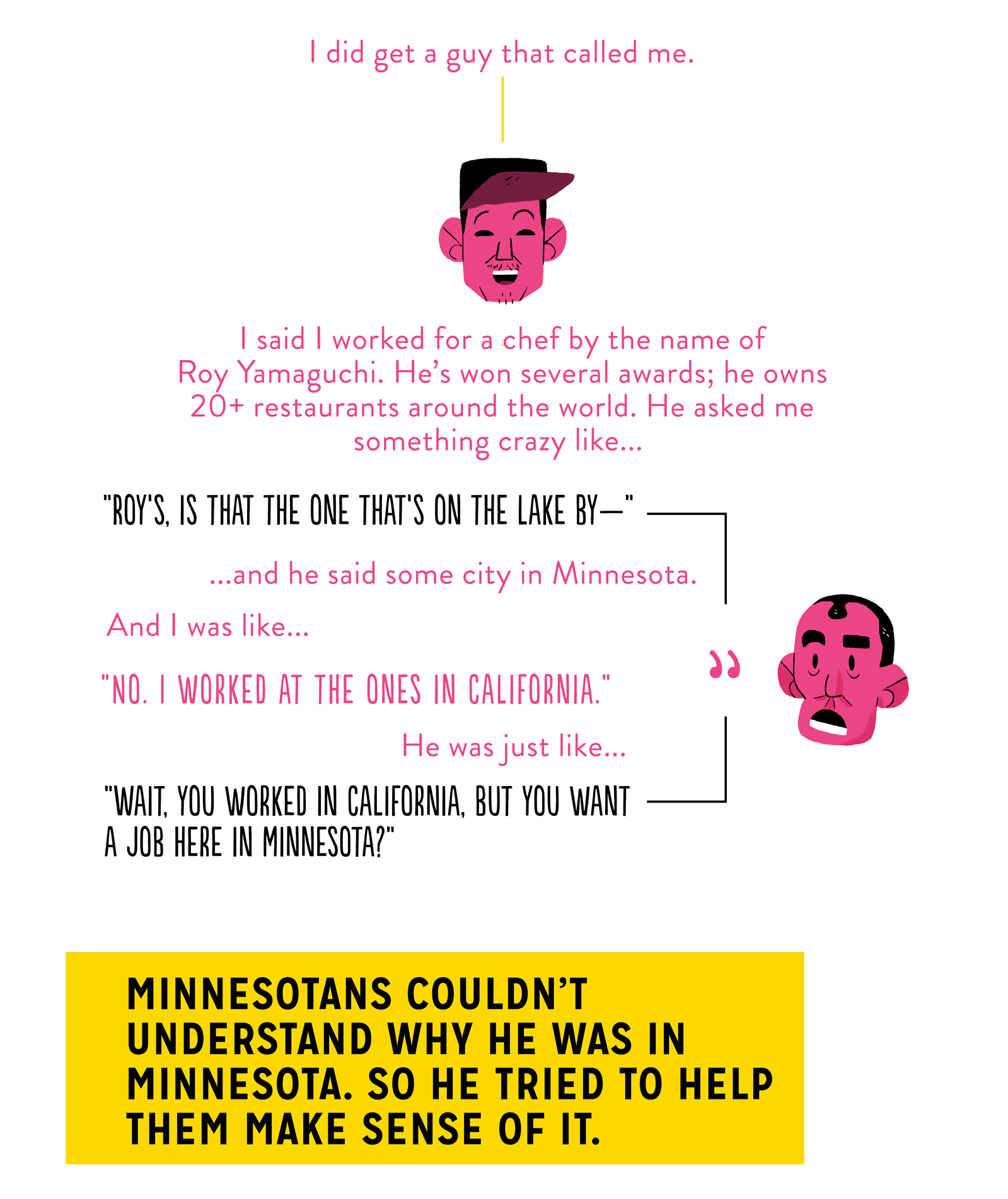
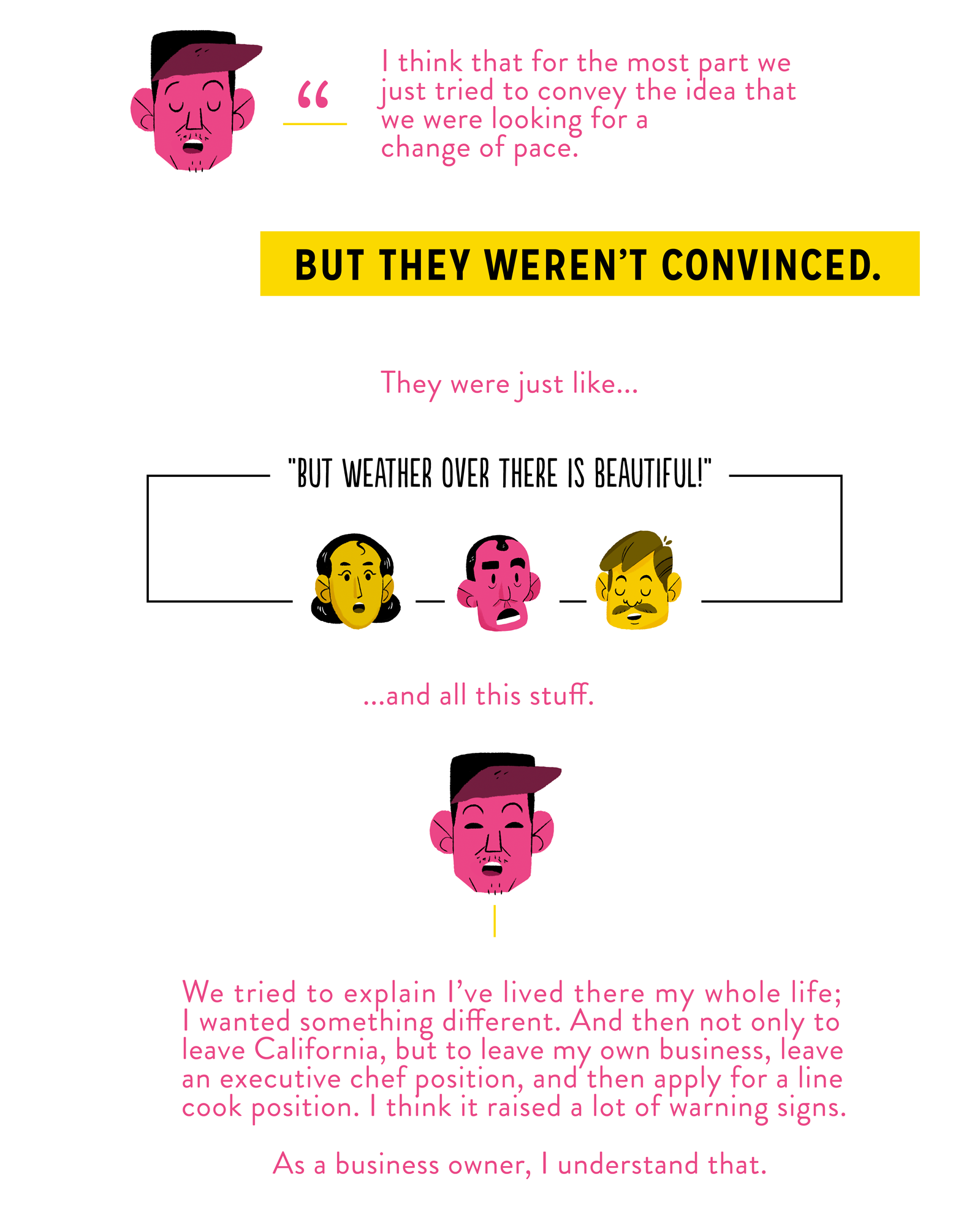
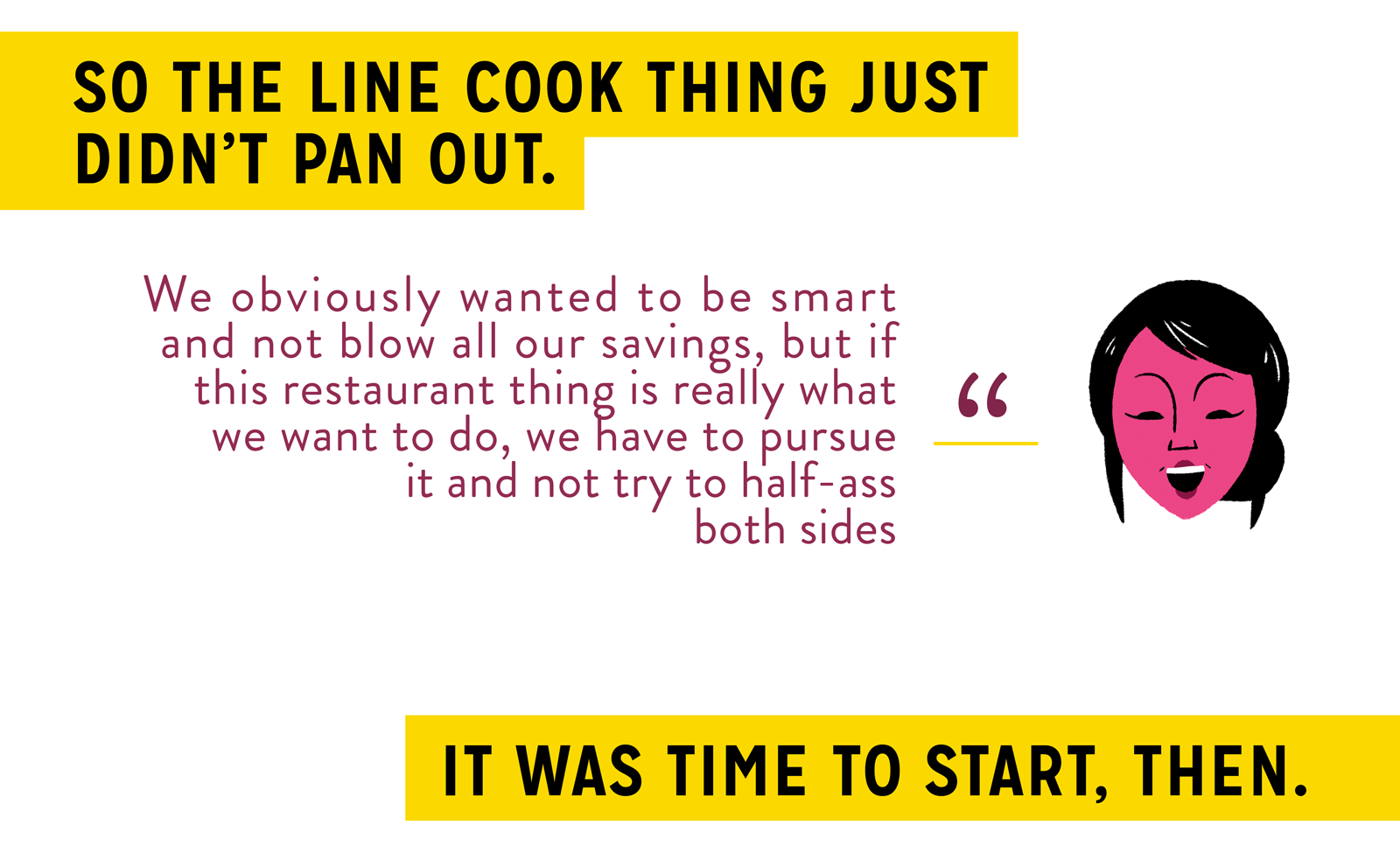
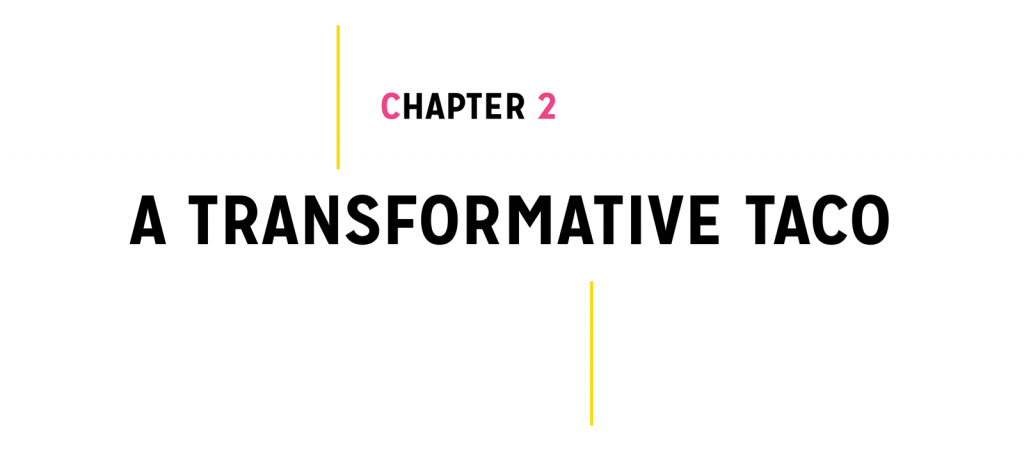

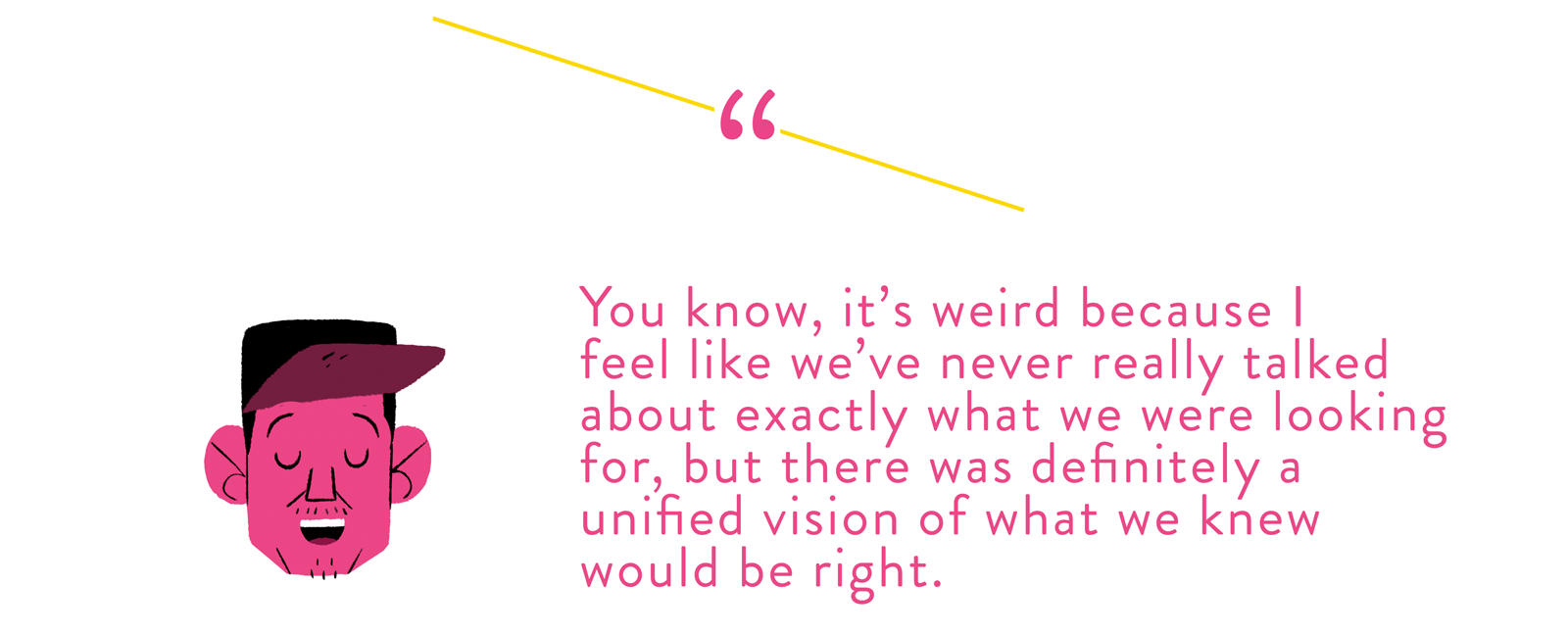

Until one day while eating lunch at the Sonora Grill in the Midtown Global Market, Thomas and Kat noticed an empty stall for rent.
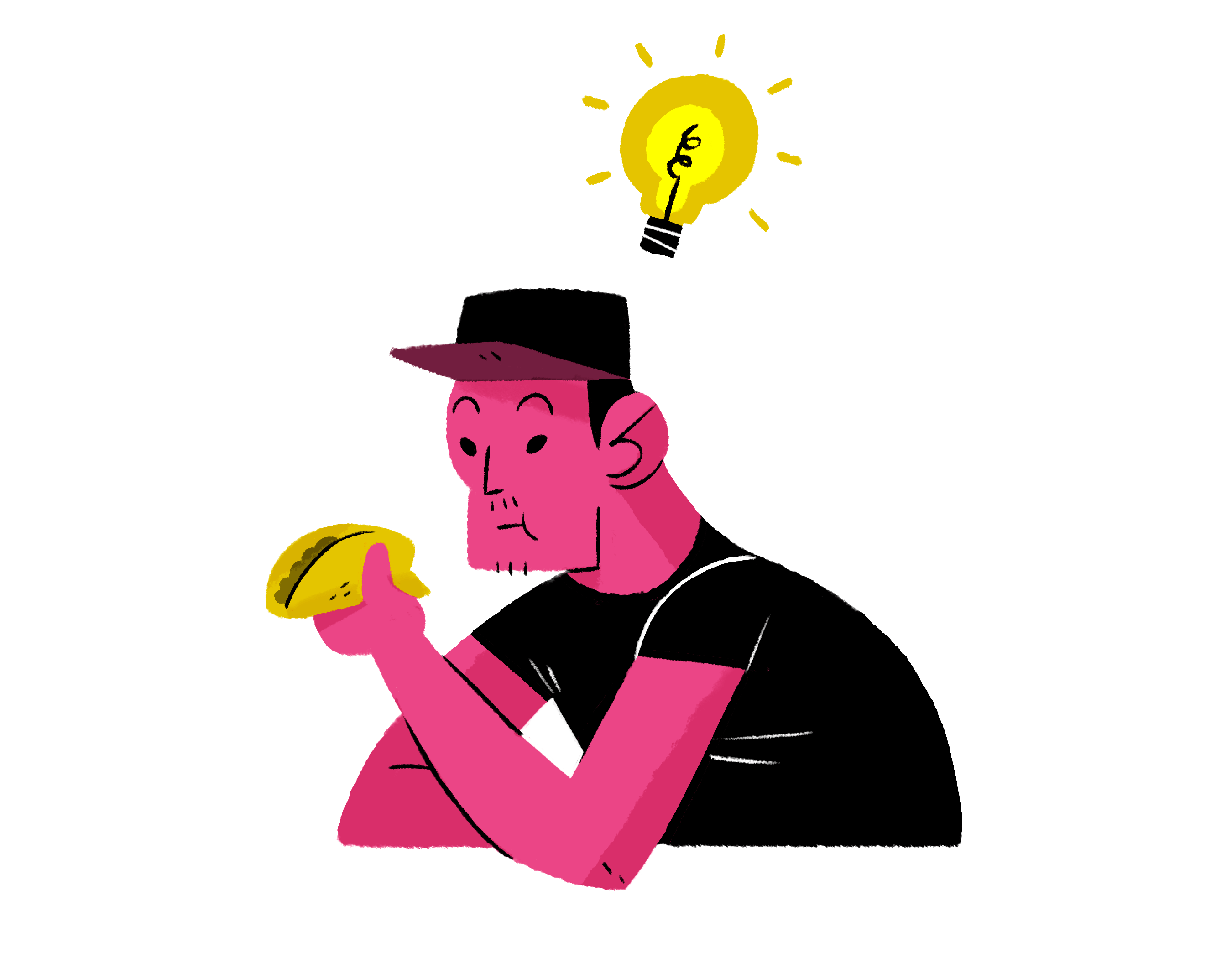
They called the landlord which turned out to be the Neighborhood Development Center, a nonprofit that helps entrepreneurs with loans and training. As Thomas and Kat dug in to learn more, their vision for a restaurant space finally started to align with a tangible and affordable prospect where they could start small.

Their plans hatched quickly. Five weeks after signing a lease at the Midtown Global Market, the Left Handed Cook opened for business.



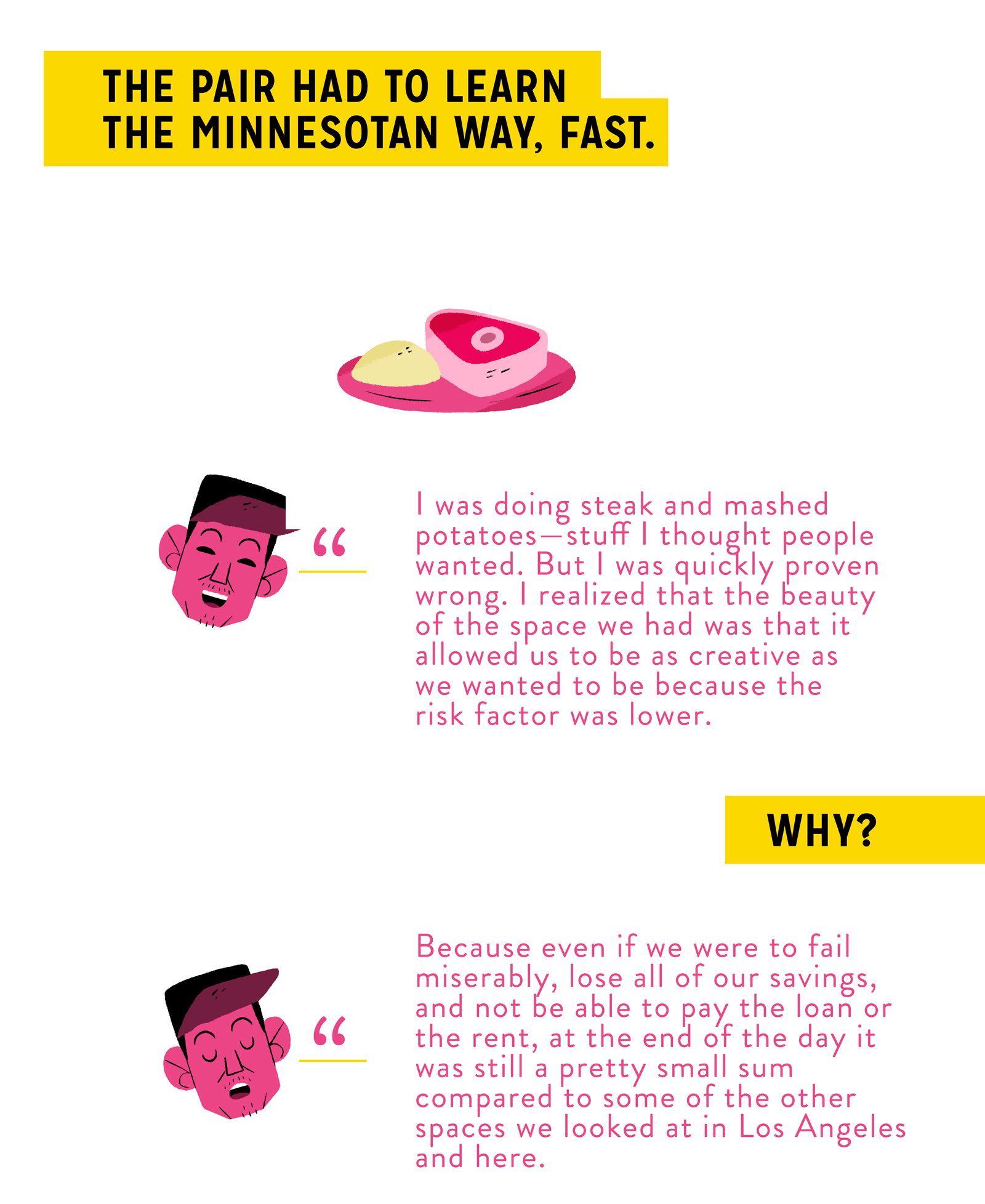
 It just seemed like we should shoot for the moon and see what we could do with it, and see if people were ready.
It just seemed like we should shoot for the moon and see what we could do with it, and see if people were ready.
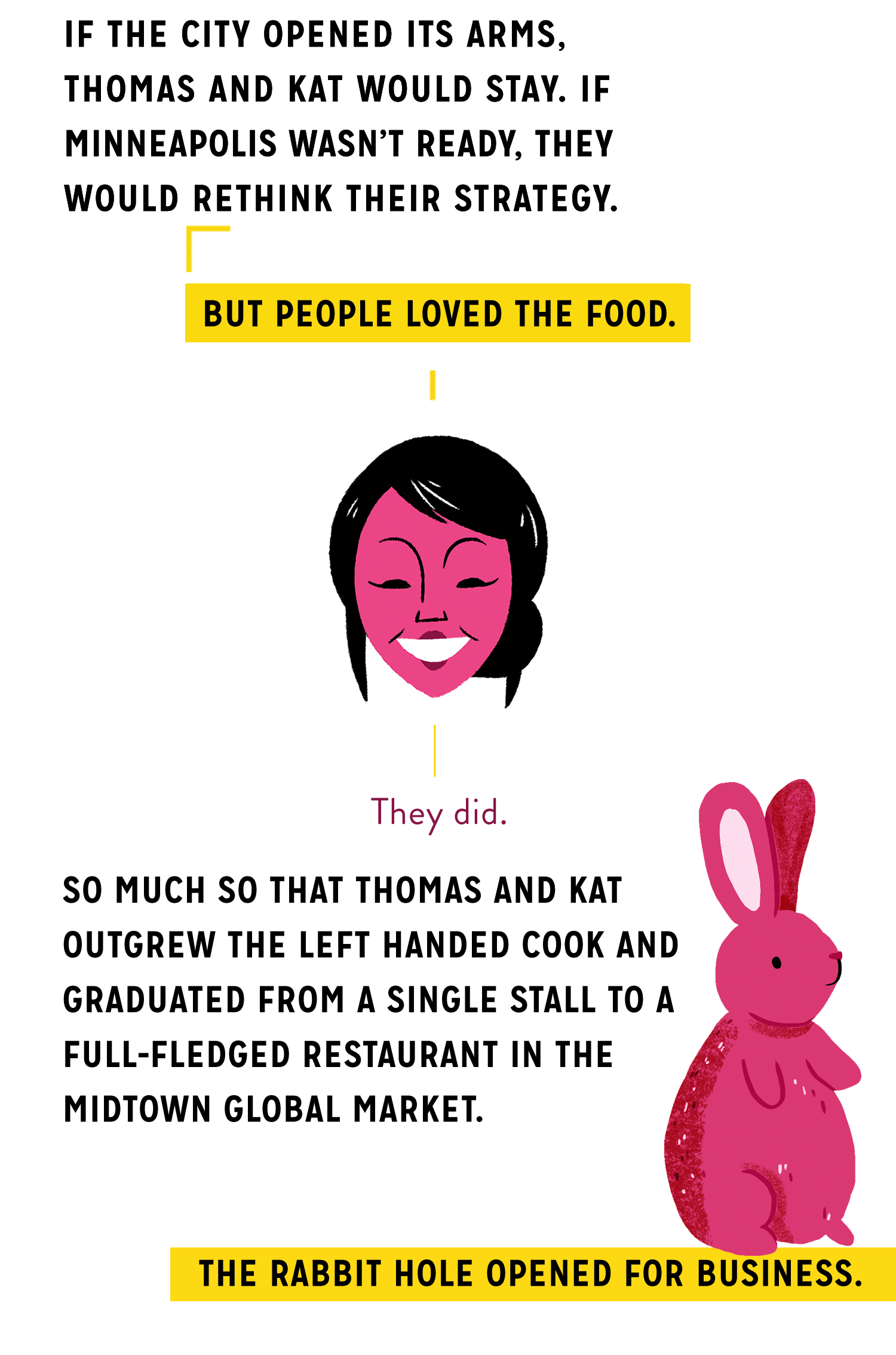
These days, Thomas and Kat practically have a cult following around their poutine (which is officially called the “Harold and Kumar Poutine”), a luscious union of house cut french fries adorned with a mix of spicy and savory bedfellows like cheddar cheese, kimchi, pork curry gravy, and a velvety poached egg.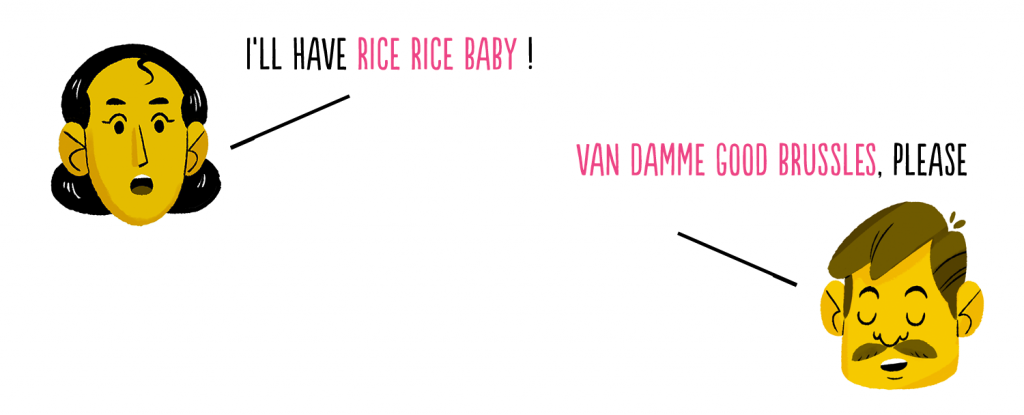
You can tell that they’re having some fun, too. The names of their dishes are a kind of ‘wink wink’ invitation for us to venture beyond the borders of our familiar well-worn palates.

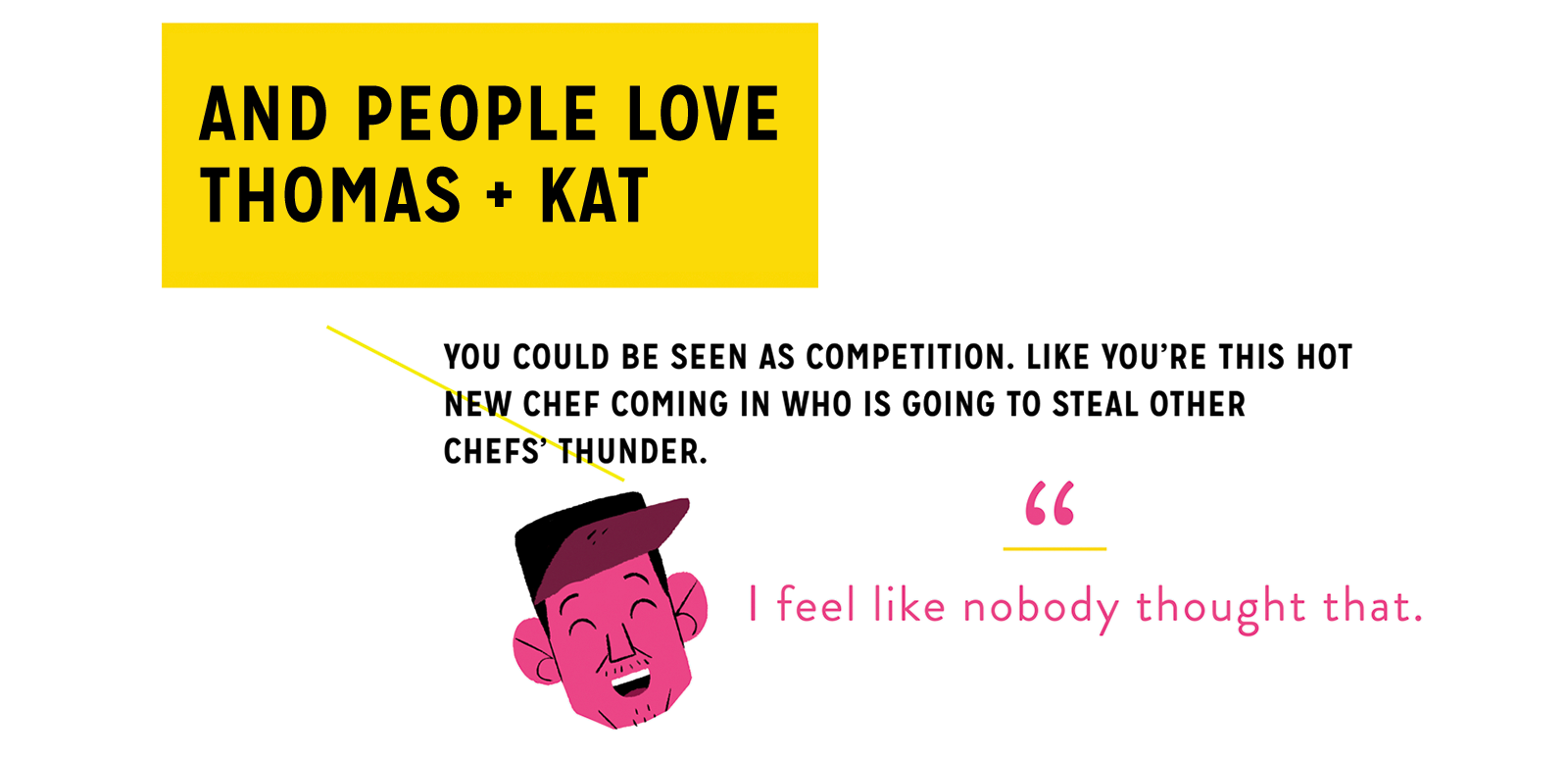
Coming to Minneapolis was a chance to start fresh and get away from the hyper-competitive Los Angeles scene, where restaurant owners would pay off delivery drivers to get first dibs on product or shaft a rival establishment with a later drop-off. Thomas thinks Minnesota’s oppressive winter weather and small size helps to cultivate a friendlier vibe that puts the common good ahead of cutthroat self-interest.  The ethos that has people digging strangers’ cars out of snow banks carries over to day-to-day business dealings. “Minneapolis is still fairly small, so all the chefs know each other,” says Thomas. “Not only the chefs, but even just the Korean or the Asian community in general is also pretty tight-knit.” So when it came to not knowing where to find the ingredients he needed, Thomas could call a fellow chef and ask. And when he asked, they’d help him. That made a world of difference.
The ethos that has people digging strangers’ cars out of snow banks carries over to day-to-day business dealings. “Minneapolis is still fairly small, so all the chefs know each other,” says Thomas. “Not only the chefs, but even just the Korean or the Asian community in general is also pretty tight-knit.” So when it came to not knowing where to find the ingredients he needed, Thomas could call a fellow chef and ask. And when he asked, they’d help him. That made a world of difference.



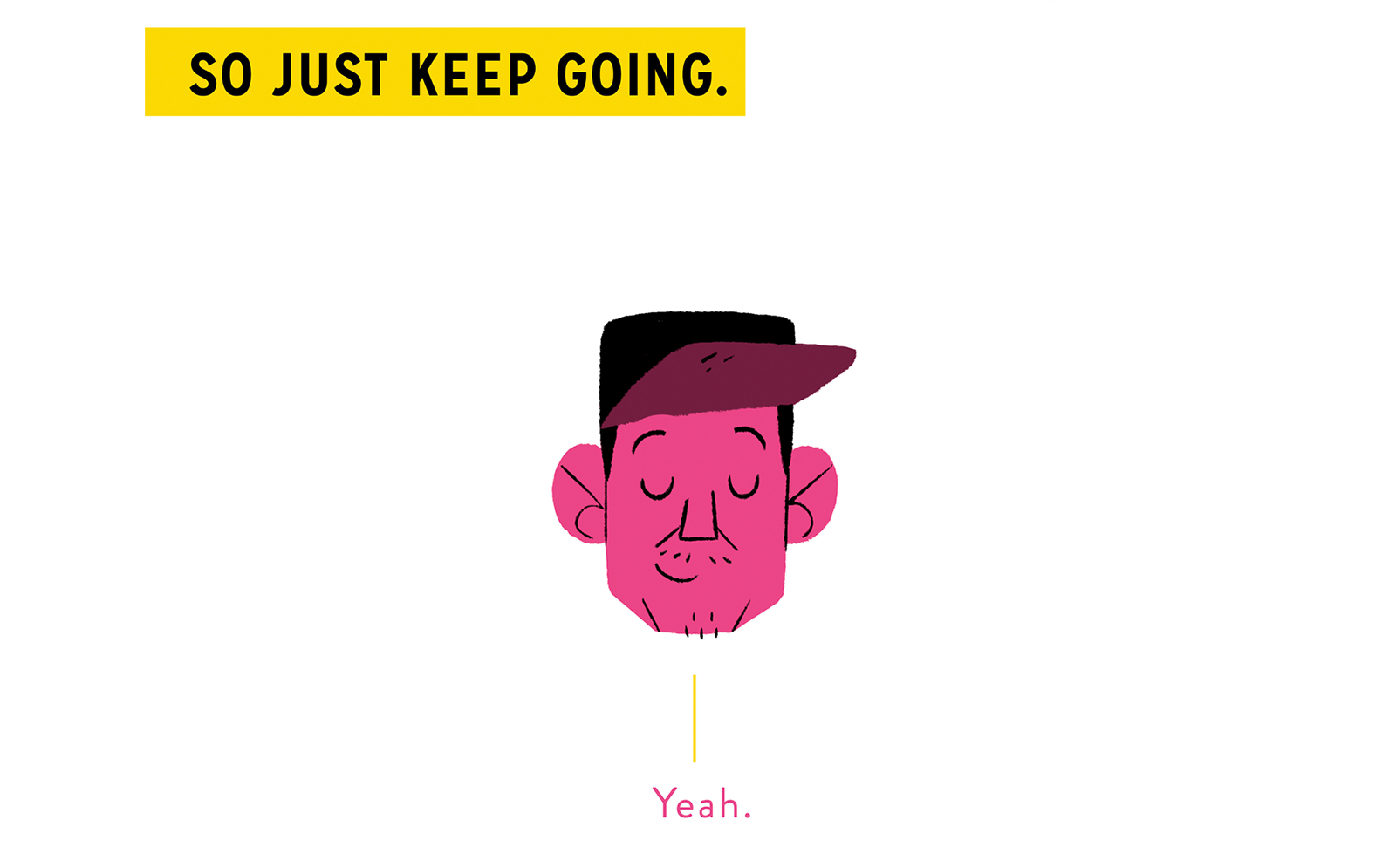
The Rabbit Hole’s evolution happened alongside other big changes in Kim’s life – most notably getting married and becoming a father. He and Melgaard opened the Rabbit Hole right around the time that his daughter was born. Fatherhood has been clarifying. Before, Kim would think nothing of working for eighteen hours straight, slicing his finger, and then going on a bender, only to get up the next day and do it all over again. He also used to ride a motorcycle. Now that’s in the past tense. 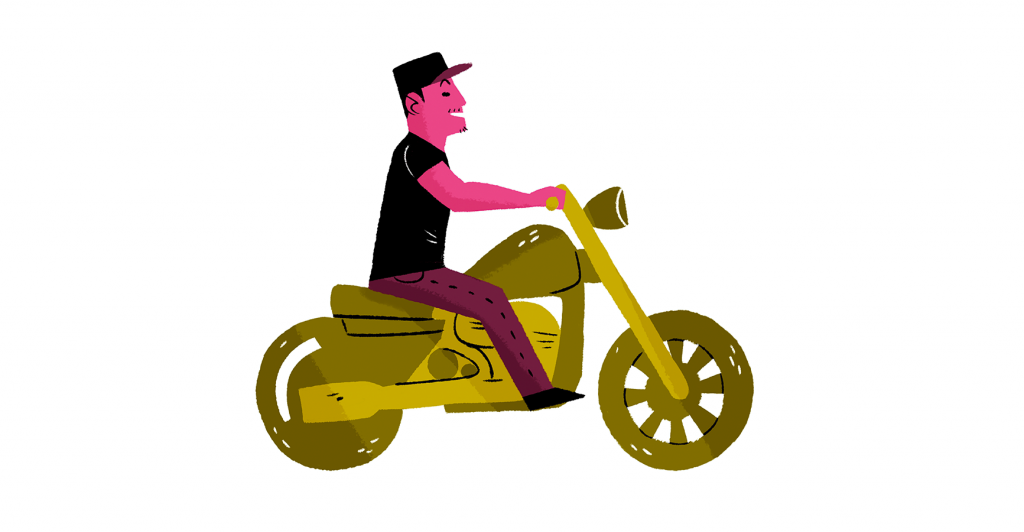 The risk just isn’t worth it. People are depending on him. Thomas and Kat employ over 30 people. That kind of responsibility isn’t lost on Thomas. That might have overwhelmed him at earlier time in life, but now it all makes sense.
The risk just isn’t worth it. People are depending on him. Thomas and Kat employ over 30 people. That kind of responsibility isn’t lost on Thomas. That might have overwhelmed him at earlier time in life, but now it all makes sense. 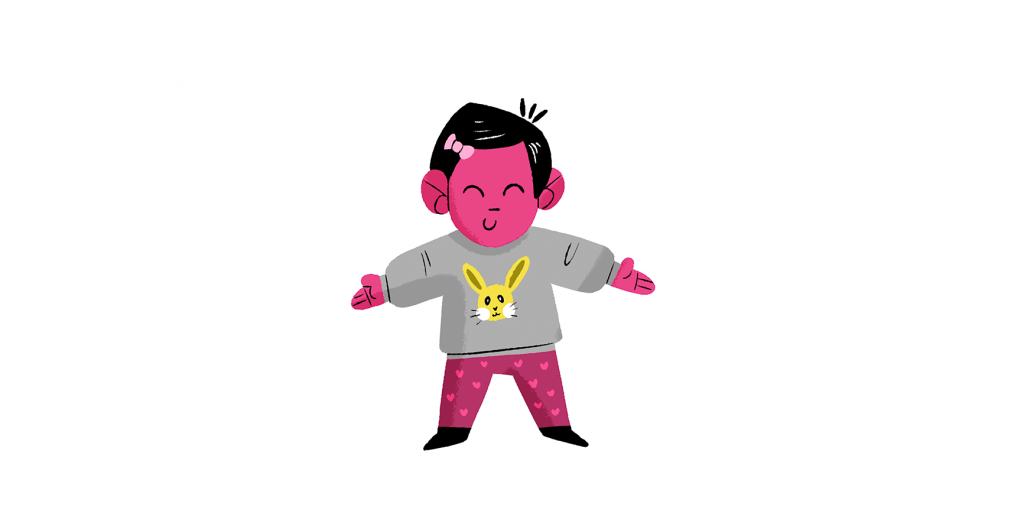
He has become a father, husband, and restaurant owner all in the same moment.

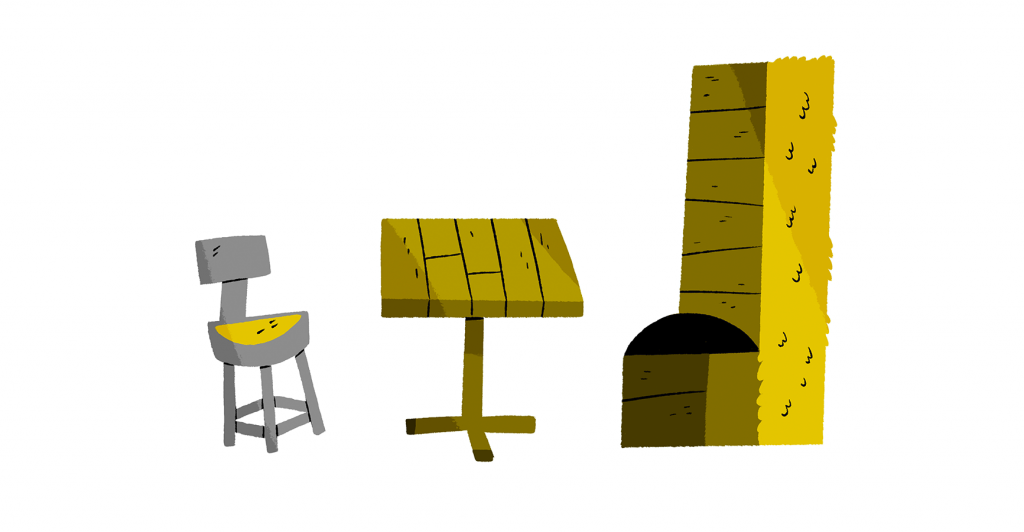
It is all working. They may have started small, but when the Left Handed Cook morphed into the Rabbit Hole, Thomas started dreaming big.

Next, we want to push the boundaries of traditional cooking even farther. Maybe even refocusing our attention on what we may not normally think of as food. Such as — everyone has said this for years — insects as an alternative to protein.

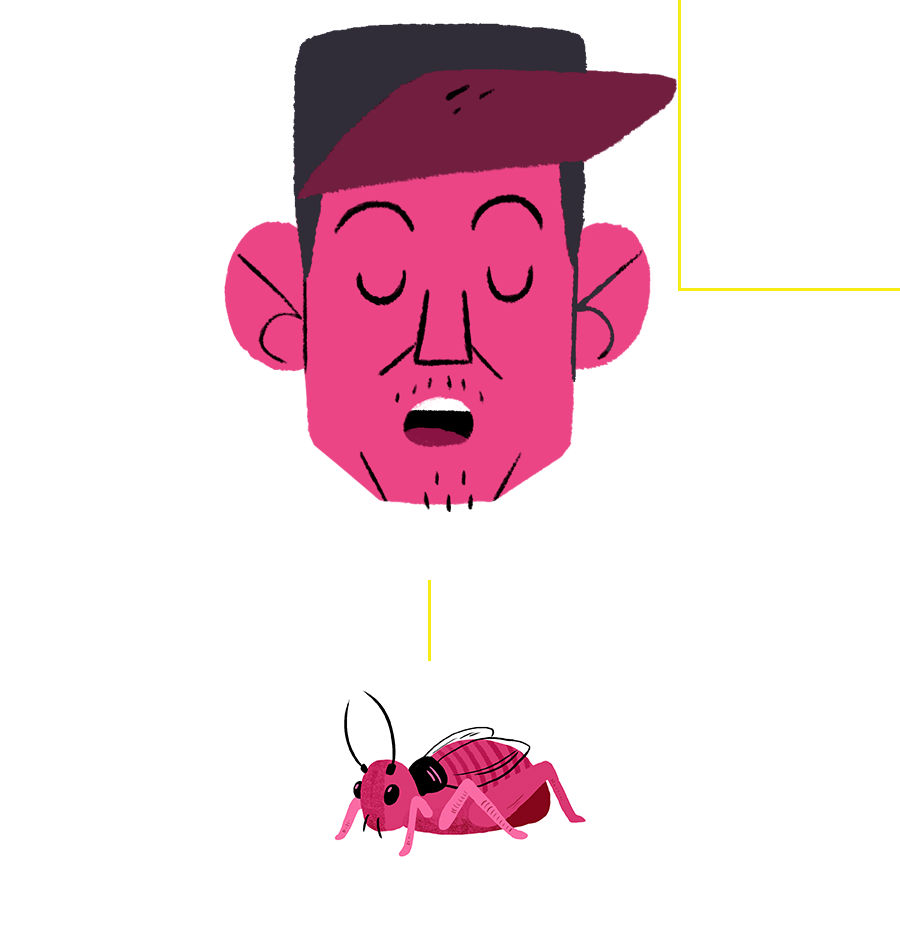
I do. I’m actually going to invite chefs from the cities to take on a course with an alternative protein — whether it’s organs, game meats we don’t normally eat, or insects; whatever it is, even vegetables that are typically something we would throw away. I think that’s exciting because it’s not only an opportunity for us to change the way we eat and how we affect the Earth, but also it’s new cuisine; it’s new food. It has been done before, but can we do it differently?
 The couple doesn’t want to push people so far afield from their comfort zones to a point where they feel alienated. By demystifying the unfamiliar, they’re inviting people to join them at a table that’s inclusive. Coaxing people away from safe choices toward something a little more adventurous takes time and trust, along with some cross-cultural translation. Early on, Kat found it helpful to tell customers that kimchi is not unlike sauerkraut, which is something a bratwurst-loving Minnesotan would understand.
The couple doesn’t want to push people so far afield from their comfort zones to a point where they feel alienated. By demystifying the unfamiliar, they’re inviting people to join them at a table that’s inclusive. Coaxing people away from safe choices toward something a little more adventurous takes time and trust, along with some cross-cultural translation. Early on, Kat found it helpful to tell customers that kimchi is not unlike sauerkraut, which is something a bratwurst-loving Minnesotan would understand.
No matter how much care is taken to welcome new patrons, Kat worries people are still scared off by perceptions that the Midtown Global Market is too different, urban and unfamiliar. Even worse, she fears others simply don’t bother to discover what’s in their own backyard. “When we came here the first time, we thought this is really cool and interesting,” Kat recalls. “But I had friends that had never been here, who have lived here their whole lives. This is literally a mile from where you live. Why would you have never gone?”
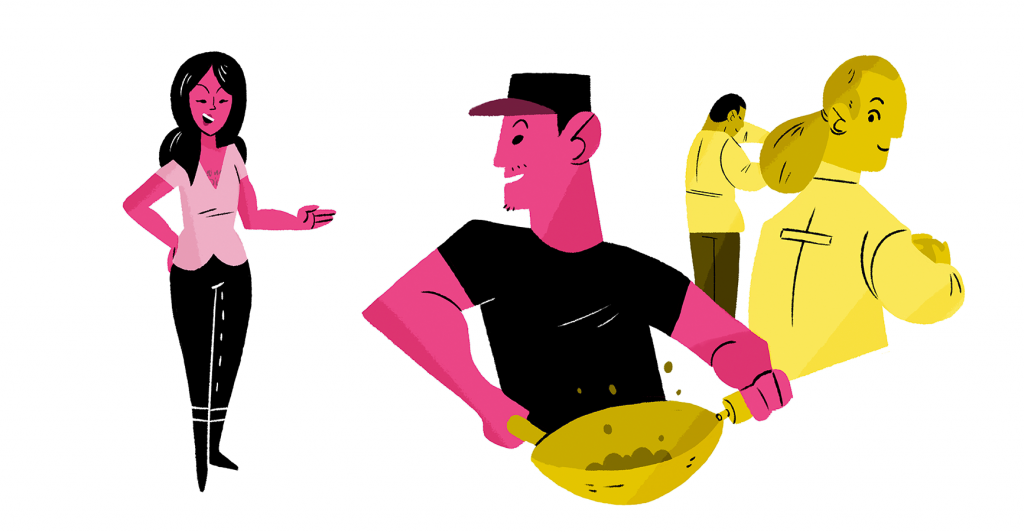


The couple worried Minnesota wouldn’t accept their food.

 Thomas and Kat say they arrived here at just the right time in Minneapolis’ unfolding urban story.
Thomas and Kat say they arrived here at just the right time in Minneapolis’ unfolding urban story.

It turned out that a bigger world was living on Lake Street, all along. And Lake Street was ready for them. 
 “We fully embrace this neighborhood. We want to immerse ourselves into this neighborhood, and this is just another step in doing that. Not only do we own a business here, not only do we work here, but we support the neighborhood and we live here. We want this neighborhood to be ours.”
“We fully embrace this neighborhood. We want to immerse ourselves into this neighborhood, and this is just another step in doing that. Not only do we own a business here, not only do we work here, but we support the neighborhood and we live here. We want this neighborhood to be ours.”

Contributors
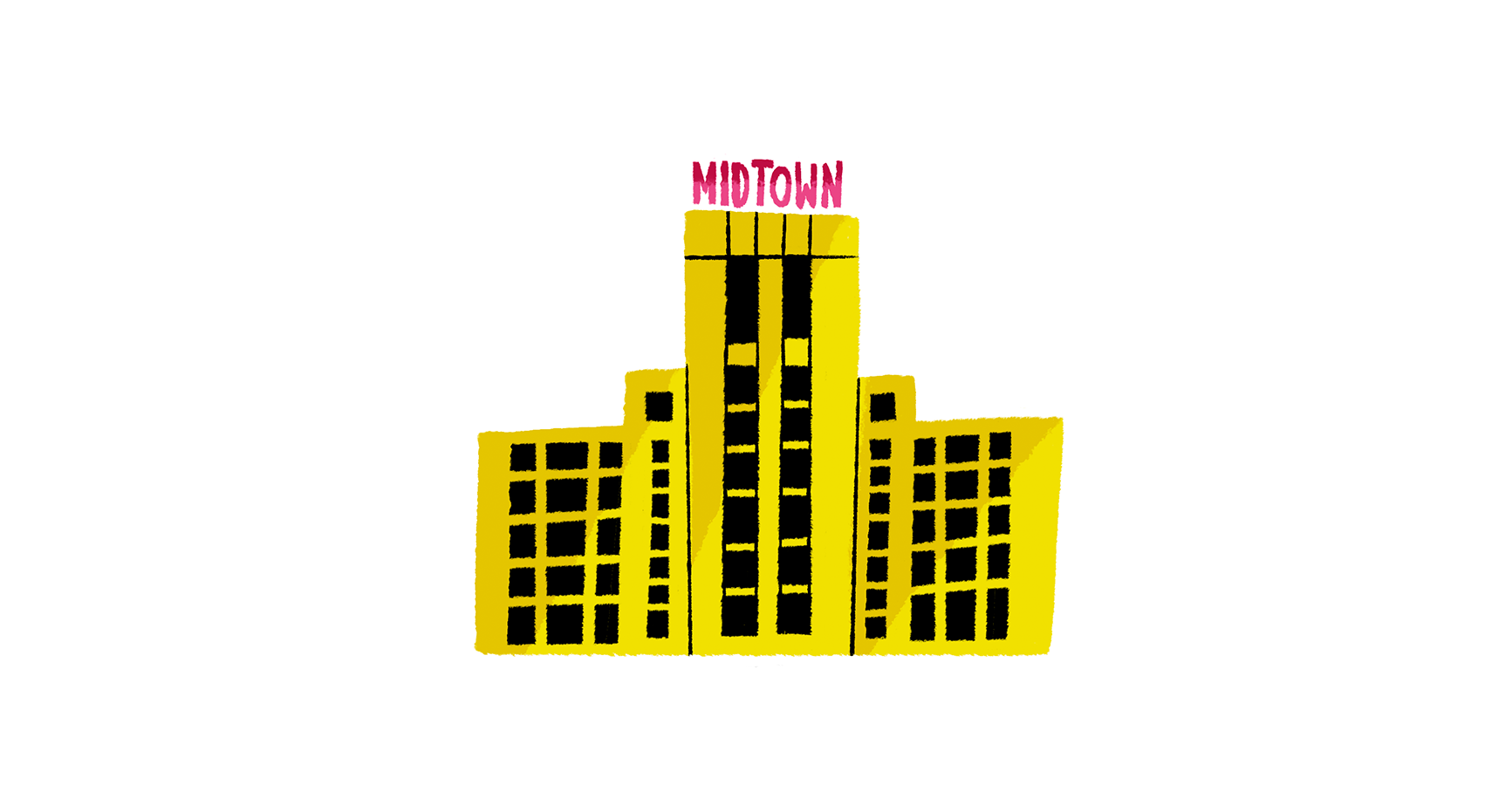


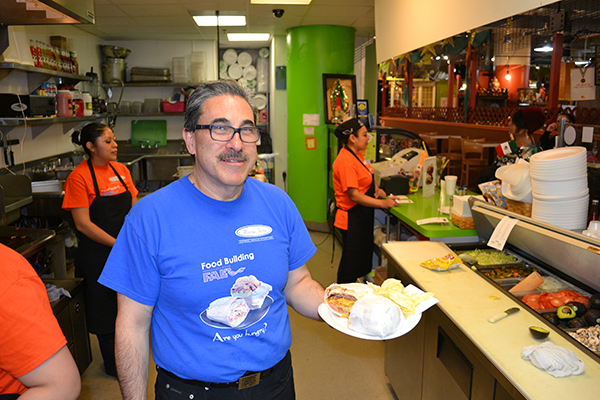
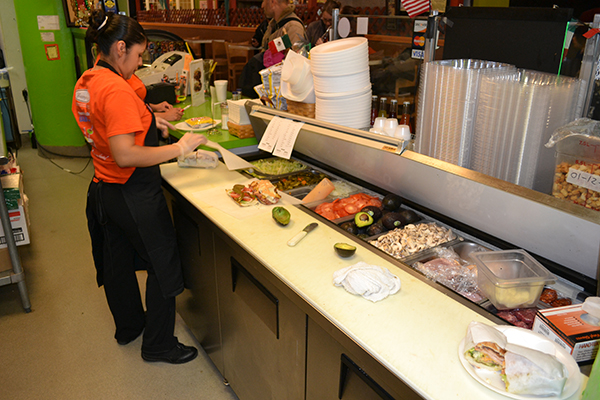
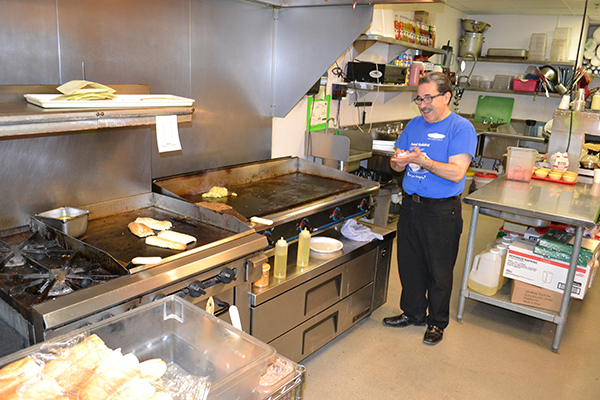 .
.